
PDF (81 kB) - Anesthesiology Clinics
Postoperative Pain Management After Ambulatory Surgery: R o l e of Mu l t i m o d a l Analgesia Ofelia Loani Elvir-Lazo, MDa, Paul F. White, PhD, MD, FANZCAb,c,d,e,f,* KEYWORDS Ambulatory surgery Multimodal analgesia Opioid analgesics Nonopioid analgesics Postoperative pain remains a challenging problem, which requires a proactive approach using a variety of treatment modalities to obtain an optimal outcome with respect to enhancing patient comfort and facilitating the recovery process. Multimodal (or balanced) analgesia represents an increasingly popular approach to preventing postoperative pain. The approach involves administering a combination of opioid and nonopioid analgesics that act at different sites within the central and peripheral nervous systems in an effort to improve pain control while eliminating opioid-related side effects.1–5 The adaptation of multimodal (or balanced) analgesic techniques as the standard approach for the prevention of pain in the ambulatory setting is one of the keys to improving the recovery process after day-case surgery.1,6 Poorly controlled pain is a major factor contributing to a delayed discharge after ambulatory surgery.2,4 Improving postoperative pain control accelerates the ability of patients to resume their activities of daily living.5 Many patients undergoing ambulatory surgery continue to experience unacceptably high levels of pain after their operation.2–4 Despite recent advances in our knowledge of multimodal analgesic therapies1 and progress in our understanding of the pathophysiologic basis of acute pain, there remains a need for clinicians to implement evidence-based, procedure-specific a Department of Anesthesiology, Cedars Sinai Medical Center, Los Angeles, CA, USA Department of Anesthesiology and Pain Management, University of Texas Southwestern Medical Center, Dallas, TX, USA c Cedars Sinai Medical Center, Los Angeles, CA, USA d Policlinico Abano, Leonardo Foundation, Abano Terme, Italy e Pharma University, Parma, Italy f The White Mountain Institute, 144 Ashby Lane, Los Altos, CA 94022, USA * Corresponding author. The White Mountain Institute, 144 Ashby Lane, Los Altos, CA 94022. E-mail address: [email protected] b Anesthesiology Clin 28 (2010) 217–224 doi:10.1016/j.anclin.2010.02.011 anesthesiology.theclinics.com 1932-2275/10/$ – see front matter ª 2010 Published by Elsevier Inc. 218 Elvir-Lazo & White multimodal analgesic protocols, which are modified to meet the needs of individual patients and to enhance the quality of postoperative pain management.6 The armamentarium of analgesic drugs and techniques for the management of postoperative pain continues to grow at a rapid rate. However, there seems to be a significant disconnect between the publication of analgesic studies in the peerreviewed literature, demonstrating approaches to improving acute pain management and the application of these concepts in clinical practice. A part of the problem relates to the increasing number and complexity of elective operations that are being performed on an ambulatory (or short-stay) basis in which the use of conventional opioid-based intravenous patient controlled analgesia and central neuraxial (spinal and epidural) analgesia techniques are simply not practical for acute pain management. This rapidly expanding patient population requires an aggressive perioperative analgesic regimen that provides effective pain relief, has minimal side effects, is intrinsically safe, and can be managed by the patient and their family members away from a hospital or surgical center. One of the most important factors in determining when a patient can be safely discharged from a surgical facility, and that also has a major influence on the patient’s ability to resume their normal activities of daily living, is the adequacy of postoperative pain control.3,7 Perioperative analgesia has traditionally been provided using potent opioid (narcotic) analgesics. However, extensive reliance on opioid medication for acute pain management is associated with a variety of perioperative complications (eg, drowsiness and sedation, postoperative nausea and vomiting (PONV), pruritus, urinary retention, ileus, constipation, ventilatory depression), which can contribute to a delayed hospital discharge and resumption of normal activities of daily living.8 Anesthesiologists are increasingly using a combination of nonopioid analgesic medications as the first line of therapy for the prevention of pain in the postoperative period. However, opioid analgesics will likely remain the primary treatment option for patients who require rescue analgesic therapy in the postoperative period until more potent and rapid-acting nonopioid analgesics become available for routine clinical use. In 2000, the Joint Commission on Accreditation of Healthcare Organizations (JCAHO) introduced new standards that mandated pain assessment and treatment as part of routine patient care in an attempt to improve control of acute pain. Many medical institutions have misinterpreted this mandate as requiring that the treatment of pain must be guided by patient reports of pain intensity indexed to a numerical pain scale.5 After the implementation of a routine numeric pain scoring system in the recovery room, Frasco and colleagues9 reported a significant increase in the use of opioid analgesics. Vila and colleagues10 reported that as a result of the JCAHOmandated policy for pain management, the incidence of opioid-related adverse reactions increased from 11 to 25 per 100,000 inpatient days at their medical center. Most adverse drug reactions were preceded by a documented decrease in the patient’s level of consciousness due to opioid-related sedation. In the ambulatory setting, the primary factor responsible for postdischarge nausea and vomiting is the use of oral opioid-containing analgesics.11 Raeder and colleagues12 reported that the use of ibuprofen after ambulatory surgery was associated with fewer gastrointestinal side effects (eg, PONV, constipation) when compared with the use of an oral combination of acetaminophen and codeine. Early studies evaluating approaches to facilitating the recovery process have demonstrated that the use of multimodal analgesic techniques can improve early recovery as well as other clinically meaningful outcomes after ambulatory surgery.13,14 These benefits have been confirmed in more recent studies15,16 and are currently the recommended practice in most fast-track clinical care plans.5 It is clear that the Multimodal Analgesia and Ambulatory Surgery reliance on a single nonopioid analgesic modality (eg, local analgesics, nonsteroidal antiinflammatory drugs [NSAIDs], and/or acetaminophen) will not suffice to control moderate to severe postoperative pain, and excessive reliance on opioid analgesics produces undesirable side effects.8,17 The short- and long-term benefits of using multimodal analgesia regimens to reduce opioid-related side effects remain controversial, because the definition of multimodal analgesia is not uniform in the anesthesia and surgery literature.1 In some contexts, multimodal analgesia refers to systemic administration of analgesic drugs with different mechanisms of action, whereas in other situations it refers to concurrent application of analgesic pharmacotherapy in combination with regional analgesia. A deficiency in the design of many of the published studies involving multimodal analgesic therapies is that the drug regimens were not continued into the postdischarge period.18 For example, only immediate pre- and postoperative administration of the cyclooxygenase 2 (COX-2) inhibitor rofecoxib as part of a multimodal analgesic regimen in outpatients undergoing inguinal hernia repair provided limited benefits beyond the early postoperative period.19 However, when the COX-2 inhibitors are administered for 3 to 5 days after ambulatory surgery,15,16 the greater benefits were achieved with respect to clinically relevant patient outcomes (eg, resumption of normal activities) and improvements in pain control. While opioid analgesics continue to play an important role in the acute treatment of moderate to severe pain in the early postoperative period, nonopioid analgesics will likely assume a greater role as preventative analgesics in the future as the number of minimally invasive (keyhole) surgery cases continues to expand. Nonopioid analgesics are increasingly being used as adjuvants before, during, and after surgery to facilitate the recovery process after ambulatory surgery because of their anesthetic- and analgesic-sparing effects and their ability to reduce postoperative pain (with movement), opioid analgesic requirement, and side effects, thereby shortening the duration of the hospital stay. The use of traditional NSAIDs, COX-2 inhibitors, acetaminophen,20–23 ketamine,24,25 dexmedetomidine,26,27 dextromethorphan, alpha2-agonists, gabapentin,28–30 pregabalin,31–34 b-blockers,35–39 and glucocorticoid steroids can provide beneficial effects when administered in appropriate doses as part of a multimodal analgesic regimen in the perioperative setting.1,8,40 Dexamethasone when used as an adjuvant decreases oxycodone consumption and helps to reduce postoperative pain.41–43 Recent studies have confirmed that a rational combination of different nonopioid analgesics when given as part of multimodal analgesia reduces postoperative pain.32,44,45 The potential beneficial effects of administering local anesthetics via alternative routes of administration for improving the perioperative outcomes continue to be investigated. The administration of intranasal lidocaine in combination with naphazoline decreased both intra- and postoperative pain and reduced rescue analgesic requirements in the postoperative period.46 Although intra-abdominal administration of levobupivacaine was alleged to produce satisfactory analgesia in patients undergoing abdominal hysterectomy procedures, the study was flawed due to the failure to include a placebo control group.47 However, other studies have demonstrated the effectiveness of the intravenous infusion of lidocaine in reducing postoperative pain and facilitating the recovery process.48–51 Yardeni and colleagues52 suggested that perioperative administration of intravenous lidocaine could improve early postoperative pain control and reduce surgery-induced immune alterations. The use of continuous local anesthetic techniques (eg, for perineural blocks or wound infiltration) has become increasingly popular due to their ability to control moderate to severe pain after major ambulatory orthopedic surgery procedures.53–57 The availability 219 220 Elvir-Lazo & White of disposable local anesthetic infusion systems and the encouraging results from these early studies have led to the increasing popularity of these techniques for pain control in the postdischarge period. However, the clear benefits of these approaches for managing pain after ambulatory surgery must be balanced against the cost of the equipment and the resources needed to safely manage these systems outside the hospital environment. Topical capsicum has also been found to produce prolonged analgesic effects because of its ability to alter nociceptive input at the peripheral nerve ending.58 The use of transcutaneous electrical nerve stimulation and acupoint stimulation has also been reported to improve postoperative pain management. Because these techniques cause no adverse effects, their use as an adjunct to conventional pharmaceutical approaches could be considered, particularly for patients in whom conventional analgesic techniques fail and/or are accompanied by severe medication-related adverse events.59,60 Preemptive analgesic techniques have been postulated to provide superior analgesia by preventing the establishment of central sensitization.61 However, this approach does not seem to offer any clinically significant advantages over so-called preventative multimodal analgesic regimens when an effective pro-active approach to pain management is initiated in the early postoperative period and extended into the postdischarge period.62 Of importance for improving the quality of pain control and facilitating recovery in the future is the need to educate patients and their family members (caregivers) about the importance of continuing their analgesic medications after the patient leaves the hospital or day-surgery center. It is also important to emphasize the need for collaboration between the various health care providers involved in the patient’s perioperative care (eg, anesthesiologists, surgeons, nurses, and physiotherapists) to integrate improved perioperative pain management strategies with the recently described fast-track recovery paradigms.5 This type of multi-disciplinary approach has been documented to improve the quality of the recovery process and reduce the hospital stay and postoperative morbidity, leading to a shorter period of convalescence after surgery.63 A critical assessment of the peer-reviewed literature regarding the optimal analgesic therapies for outpatient laparoscopic cholecystectomy by Bisgaard64 concluded that a multimodal analgesic regimen consisting of a preoperative single dose of dexamethasone, incisional local anesthetics (at the beginning and/or end of surgery), and continuous treatment with NSAIDs (or COX-2 inhibitors) during the first 3 to 4 days provided the best clinical outcome. It was further suggested that elimination of opioid-based analgesia would be highly desirable in the future. These important findings have been confirmed by White and colleagues.15 In a prospective, placebo-controlled study, involving the administration of celecoxib on the day of surgery and subsequently for 3 days after outpatient laparoscopic surgery as part of a multimodal analgesic regimen, it was found that celecoxibtreated patients not only experienced less pain and reduced need for opioid-containing oral analgesics but also (more importantly) were able to resume normal activities of daily living 1 to 2 days earlier. With the more widespread use of multimodal perioperative analgesic regimens, involving both opioid and nonopioid analgesic therapies, physicians and nurses are becoming increasingly aware of the important role that these techniques play in facilitating the recovery process and improving patient satisfaction. Although many factors, in addition to pain, must be carefully controlled to minimize postoperative morbidity and facilitate the recovery process after elective surgery (eg, PONV, Multimodal Analgesia and Ambulatory Surgery hydration status), the adequacy of pain control should remain a major focus of health care providers, caring for patients undergoing ambulatory surgical procedures.17,19 With the changes in health care dictated by economic pressures, there has been a realization that the duration of the hospital stay can be reduced without compromising the quality of patient care. Advances in surgical technology and anesthetic drugs and techniques have made an impact on the way perioperative care is currently being delivered to patients undergoing ambulatory surgery. Multidisciplinary fasttrack or accelerated recovery processes encompass many aspects of anesthesia and analgesic care,5 optimizing not only the preoperative preparation and prehabilitation but also the intraoperative attenuation of surgical stress and postoperative pain control and rehabilitation procedures.65 Current evidence suggests that these improvements in patient outcome related to pain control can best be achieved by using a combination of preventative analgesic techniques involving both central and peripheral-acting analgesic drugs as well as novel approaches to administering drugs in locations remote from the hospital setting. It is of critical importance for clinical investigators to return to the hard work of performing prospective, randomized clinical trials on a procedure-specific basis to evaluate the use of different analgesic combinations as part of multimodal analgesic treatment regimens in the postoperative period.63,66 Improving recovery after ambulatory surgery by optimizing anesthetic and analgesic techniques will benefit patients, health care providers, and society-at-large in the future.67 REFERENCES 1. White PF. Multimodal pain management - the future is now! Curr Opin Investig Drugs 2007;8:517–8. 2. Pavlin DJ, Chen C, Penazola DA, et al. Pain as a factor complicating recovery and discharge after ambulatory surgery. Anesth Analg 2002;95:627–34. 3. Chung F, Ritchie E, Su J. Postoperative pain in ambulatory surgery. Anesth Analg 1997;85:808–16. 4. Brennan F, Carr DB, Cousins M. Pain management: a fundamental human right. Anesth Analg 2007;105:205–21. 5. White PF, Kehlet H, Neal JM, et al. Role of the anesthesiologist in fast-track surgery: from multimodal analgesia to perioperative medical care. Anesth Analg 2007;104:1380–96. 6. Schug S, Chong C. Pain management after ambulatory surgery. Curr Opin Anaesthesiol 2009;22:738–43. 7. Kavanagh T, Hu P, Minogue S. Daycase laparoscopic cholecystectomy: a prospective study of postdischarge pain, analgesic and antiemetic requirements. Ir J Med Sci 2008;177:111–5. 8. White PF. The changing role of non-opioid analgesic techniques in the management of postoperative pain. Anesth Analg 2005;101:S5–22. 9. Frasco PE, Sprung J, Trentman TL. The impact of the joint commission for accreditation of healthcare organizations pain initiative on perioperative opiate consumption and recovery room lengths of stay. Anesth Analg 2005;100:162–8. 10. Vila H Jr, Smith RA, Augustyniak MJ, et al. The efficacy and safety of pain management before and after implementation of hospital-wide pain management standards: is patient safety compromised by treatment based solely on numerical pain ratings? Anesth Analg 2005;101:474–80. 11. White PF. Prevention of nausea and vomiting: a multimodal solution to a persistent problem. N Engl J Med 2004;350:2511–2. 221 222 Elvir-Lazo & White 12. Raeder JC, Steine S, Vatsgar TT. Oral ibuprofen versus paracetamol plus codeine for analgesia after ambulatory surgery. Anesth Analg 2001;92:1470–2. 13. Michaloliakou C, Chung F, Sharma S. Preoperative multimodal analgesia facilitates recovery after ambulatory laparoscopic cholecystectomy. Anesth Analg 1996;83:44–51. 14. Eriksson H, Tenhunen A, Korttila K. Balanced analgesia improves recovery and outcome after outpatient tubal ligation. Acta Anaesthesiol Scand 1996;40:151–5. 15. White PF, Sacan O, Tufanogullari B, et al. Effect of short-term postoperative celecoxib administration on patient outcome after outpatient laparoscopic surgery. Can J Anaesth 2007;54:342–8. 16. Gan TJ, Joshi GP, Viscusi E, et al. Preoperative parenteral parecoxib and followup oral valdecoxib reduce length of stay and improve quality of patient recovery after laparoscopic cholecystectomy surgery. Anesth Analg 2004;98:1665–73. 17. White PF, Kehlet H. Improving pain management: are we jumping from the frying pan into the fire? [editorial]. Anesth Analg 2007;105:10–2. 18. Ma H, Tang J, White PF, et al. Perioperative rofecoxib improves early recovery after outpatient herniorrhaphy. Anesth Analg 2004;98:970–5. 19. White PF, Kehlet H. Postoperative pain management and patient outcome: time to return to work! [editorial]. Anesth Analg 2007;104:487–90. 20. Mitchell A, van Zanten SV, Inglis K, et al. A randomized controlled trial comparing acetaminophen plus ibuprofen versus acetaminophen plus codeine plus caffeine after outpatient general surgery. J Am Coll Surg 2008;206:472–9. 21. Gorocs TS, Lambert M, Rinne T, et al. Efficacy and tolerability of ready-to-use intravenous paracetamol solution as monotherapy or as an adjunct analgesic therapy for postoperative pain in patients undergoing elective ambulatory surgery: open, prospective study. Int J Clin Pract 2009;63:112–20. 22. Api O, Unal O, Ugurel V, et al. Analgesic efficacy of intravenous paracetamol for outpatient fractional curettage: a randomised, controlled trial. Int J Clin Pract 2009;63:105–11. 23. Ohnesorge H, Bein B, Hanss H, et al. Paracetamol versus metamizol in the treatment of postoperative pain after breast surgery: a randomized, controlled trial. Eur J Anaesthesiol 2009;26:648–53. 24. Viscomi CM, Friend A, Parker C, et al. Ketamine as an adjuvant in lidocaine intravenous regional anesthesia: a randomized, double-blind, systemic control trial. Reg Anesth Pain Med 2009;34:130–3. 25. Suzuki M. Role of N-methyl-D-aspartate receptor antagonists in postoperative pain management. Curr Opin Anaesthesiol 2009;22:618–22. 26. Lin TF, Yeh YC, Lin FS, et al. Effect of combining dexmedetomidine andmorphine for intravenous patient-controlled analgesia. Br J Anaesth 2009;102:117–22. 27. Salman N, Uzun S, Coskun F, et al. Dexmedetomidine as a substitute for remifentanil in ambulatory gynecologic laparoscopic surgery. Saudi Med J 2009;30:77–81. 28. Gilron I, Orr E, Tu D, et al. A randomized, double-blind, controlled trial of perioperative administration of gabapentin, meloxicam and their combination for spontaneous and movement-evoked pain after ambulatory laparoscopic cholecystectomy. Anesth Analg 2009;108:623–30. 29. Srivastava U, Kumar A, Saxena S, et al. Effect of preoperative gabapentin on postoperative pain and tramadol consumption after minilap open cholecystectomy: a randomized double-blind, placebo-controlled trial. Eur J Anaesthesiol 2010;27:331–5. 30. Sen H, Sizlan A, Yanarates O, et al. A comparison of gabapentin and ketamine in acute and chronic pain after hysterectomy. Anesth Analg 2009;109:1645–50. Multimodal Analgesia and Ambulatory Surgery 31. Agarwal A, Gautam S, Gupta D, et al. Evaluation of a single preoperative dose of pregabalin for attenuation of postoperative pain after laparoscopic cholecystectomy. Br J Anaesth 2008;101:700–4. 32. Mathiesen O, Jacobsen LS, Holm HE, et al. Pregabalin and dexamethasone for postoperative pain control: a randomized controlled study in hip arthroplasty. Br J Anaesth 2008;101:535–41. 33. Buvanendran A. Perioperative oral pregabalin reduces chronic pain after total knee arthroplasty: a prospective, randomized controlled trial. Anesth Analg 2010;110:199–207. 34. White PF, Tufanogullari B, Taylor J, et al. The effect of pregabalin on preoperative anxiety and sedation levels: a dose-ranging study. Anesth Analg 2009;108: 1140–5. 35. Collard V, Mistraletti G, Taqi A, et al. Intraoperative esmolol infusion in the absence of opioids spares postoperative fentanyl in patients undergoing ambulatory laparoscopic cholecystectomy. Anesth Analg 2007;105:1255–62. 36. Coloma M, Chiu J, White P, et al. The use of esmolol as an alternative to remifentanil during desflurane anesthesia for fast-track outpatient gynecologic laparoscopic surgery. Anesth Analg 2001;92:352–7. 37. White PF, Wang BG, Tang J, et al. The effect of intraoperative use of esmolol and nicardipine on recovery after ambulatory surgery. Anesth Analg 2003;97:1633–8. 38. Chia YY, Chan MH, Ko NH, et al. Role of b-blockade in anaesthesia and postoperative pain management after hysterectomy. Br J Anaesth 2004;93:799–805. 39. Ozturk T, Kaya H, Aran G, et al. Postoperative beneficial effects of esmolol in treated hypertensive patients undergoing laparoscopic cholecystectomy. Br J Anaesth 2008;100:211–4. 40. Salerno A, Hermann R. Efficacy and safety of steroid use for postoperative pain relief. Update and review of the medical literature. J Bone Joint Surg Am 2006;88: 1361–72. 41. Kardash KJ, Sarrazin F, Tessler MJ, et al. Single-dose dexamethasone reduces dynamic pain after total hip arthroplasty. Anesth Analg 2008;106:1253–7. 42. Jokela RM, Ahonen JV, Tallgren MK, et al. The effective analgesic dose of dexamethasone after laparoscopic hysterectomy. Anesth Analg 2009;109:607–15. 43. Vieira PA, Pulai I, Tsao GC, et al. Dexamethasone with bupivacaine increases duration of analgesia in ultrasound-guided interscalene brachial plexus blockade. Eur J Anaesthesiol 2010;27:285–8. 44. Mathiesen O, Rasmussen ML, Dierking G, et al. Pregabalin and dexamethasone in combination with paracetamol for postoperative pain control after abdominal hysterectomy. A randomized clinical trial. Acta Anaesthesiol Scand 2009;53: 227–35. 45. Rasmussen ML, Mathiesen O, Dierking O, et al. Multimodal analgesia with gabapentin, ketamine and dexamethasone in combination with paracetamol and ketorolac after hip arthroplasty: a preliminary study. Eur J Anaesthesiol 2010;27: 324–30. 46. Granier M, Dadure C, Bringuier S, et al. Intranasal lidocaine plus naphazoline nitrate improves surgical conditions and perioperative analgesia in septorhinoplasty surgery. Can J Anaesth 2009;56:102–8. 47. Perniola A, Gupta A, Crafoord K, et al. Intraabdominal local anaesthetics for postoperative pain relief following abdominal hysterectomy: a randomized, doubleblind, dose-finding study. Eur J Anaesthesiol 2009;26:421–9. 48. Kaba A, Laurent SR, Detroz BJ, et al. Intravenous lidocaine infusion facilitates acute rehabilitation after laparoscopic colectomy. Anesthesiology 2007;106:11–8. 223 224 Elvir-Lazo & White 49. Lauwick S, Kim DJ, Michelagnoli G, et al. Intraoperative infusion of lidocaine reduces postoperative fentanyl requirements in patients undergoing laparoscopic cholecystectomy. Can J Anaesth 2008;55:754–60. 50. Herroeder S, Pecher S, Schonherr ME, et al. Systemic lidocaine shortens length of hospital stay after colorectal surgery: a double-blinded, randomized, placebocontrolled trial. Ann Surg 2007;246:192–200. 51. Groudine SB, Fisher HA, Kaufman RP Jr, et al. Intravenous lidocaine speeds the return of bowel function, decreases postoperative pain, and shortens hospital stay in patients undergoing radical retropubic prostatectomy. Anesth Analg 1998;86:235–9. 52. Yardeni IZ, Beilin B, Mayburd E, et al. The effect of perioperative intravenous lidocaine on postoperative pain and immune function. Anesth Analg 2009;109: 1464–9. 53. White PF, Issioui T, Skrivanek GD, et al. Use of a continuous popliteal sciatic nerve block for the management of pain after major podiatric surgery: does it improve quality of recovery? Anesth Analg 2003;97:1303–9. 54. Ilfeld BM, Enneking FK. Continuous peripheral nerve blocks at home: a review. Anesth Analg 2005;100:1822–33. 55. Capdevilla X, Dadure C, Bringuier S, et al. Effect of patient-controlled perineural analgesia on rehabilitation and pain after ambulatory orthopaedic surgery: a multicenter randomised trial. Anesthesiology 2006;105:566–73. 56. Liu SS, Richman JM, Thirlby R, et al. Efficacy of continuous wound catheters delivering local anesthetic for postoperative analgesia a quantitative and qualitative systematic review of randomized controlled trials. J Am Coll Surg 2006;203: 914–32. 57. Ilfeld BM, Le LT, Ramjohn J, et al. The effects of local anesthetic concentration and dose on continuous infraclavicular nerve blocks: a multicenter, randomized, observermasked, controlled study. Anesth Analg 2009;108:345–50. 58. Kim KS, Nam YM. The analgesic effects of capsicum plaster at the Zusanli point after abdominal hysterectomy. Anesth Analg 2006;103:709–13. 59. Wang B, Tang J, White PF, et al. Effect of the intensity of transcutaneous acupoint electrical stimulation on the postoperative analgesic requirement. Anesth Analg 1997;85:406–13. 60. Usichenko TI, Kuchling S, Witstruck T, et al. Auricular acupuncture for pain relief after ambulatory knee surgery: a randomized trial. CMAJ 2007;176:179–83. 61. Moiniche S, Kehlet H, Dahl JB. A qualitative and quantitative systematic review of preemptive analgesia for postoperative pain relief. Anesthesiology 2002;96: 725–41. 62. Sun T, Sacan O, White PF, et al. Perioperative vs postoperative celecoxib on patient outcome after major plastic surgery procedures. Anesth Analg 2008; 106:950–8. 63. White PF, Kehlet H. Improving postoperative pain management: what are the unresolved issues? Anesthesiology 2010;112:220–5. 64. Bisgaard T. Analgesic treatment after laparoscopic cholecystectomy: a critical assessment of the evidence. Anesthesiology 2006;104:835–46. 65. Baldini G, Carli F. Anesthetic and adjunctive drugs for fast-track surgery. Curr Drug Targets 2009;10(8):667–86. 66. White PF, Kehlet H, Liu S. Perioperative analgesia: what do we still know? Anesth Analg 2009;108:1364–7. 67. White PF. Facilitating the recovery process: who really benefits? Anesth Analg 2010;110:273–5.
© Copyright 2025

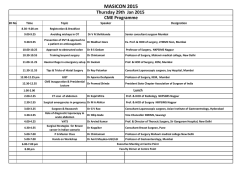
![Download [ PDF ] - journal of evolution of medical and dental sciences](http://s2.esdocs.com/store/data/000458860_1-b5abb1dbf29b0a0496894dba1a110341-250x500.png)
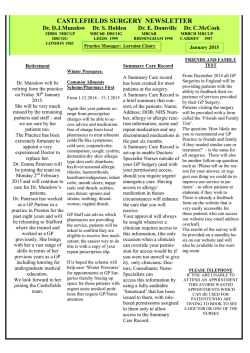
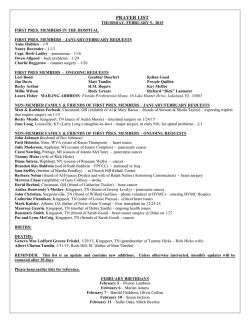
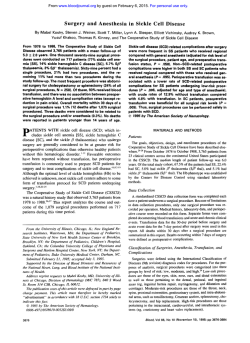
![Download [ PDF ] - journal of evolution of medical and dental sciences](http://s2.esdocs.com/store/data/000489891_1-203bb89a5d7bdca4a63b054b12ada0ad-250x500.png)
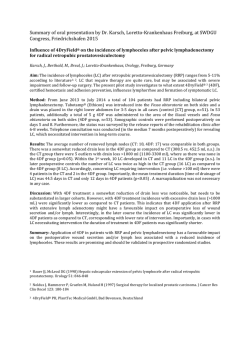
![Download [ PDF ] - journal of evolution of medical and dental sciences](http://s2.esdocs.com/store/data/000486842_1-ef85235a5cd1393443d4cd2532a02e96-250x500.png)